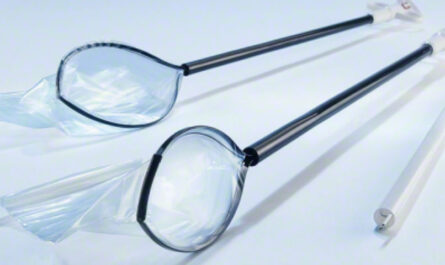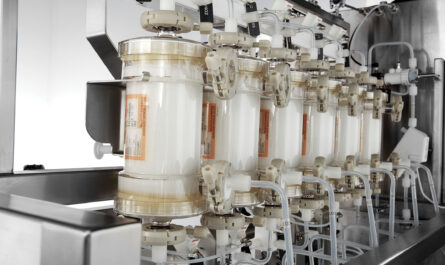
The human heart works tirelessly to pump blood throughout the body. Integral to this life-sustaining function are the heart valves that ensure blood flows in only one direction with each heartbeat. However, age, illness or injury can damage these delicate valves over time. When a heart valve can no longer function properly, doctors may recommend replacing it with an artificial or prosthetic valve. In this article, we explore the latest advances in prosthetic heart valve technology and their benefits for patients.
Types of Prosthetic Heart Valves
There are two main types of prosthetic heart valves available:
Mechanical Valves
Mechanical valves are highly durable substitutes made entirely from non-biological materials like carbon or plastic reinforced with metals like titanium. There are two sub-types:
– Tilting disc valves have a disc that opens and closes to regulate blood flow.
– Bileaflet valves have two semicircular flaps that open and close.
Bioprosthetic/Tissue Valves
Tissue or bioprosthetic valves are constructed from biologically-derived material intended to mimic the structure and function of natural heart valves. The three tissues used are:
– Porcine (pig) tissue valves – Most common type due to their durability and tissue similarity to human valves.
– Bovine (cow) tissue valves – Longevity is shorter than porcine valves.
– Homograft or allograft valves – Utilize donated human heart valves but have limited availability.
Each valve type has benefits and risks that patients should discuss with their care team to determine the best replacement for their individual circumstances.
Advancing Prosthetic Valve Technology
Valve Design Innovation
Engineers continuously refine both mechanical and tissue valve designs to maximize blood flow, durability and patient outcomes. Some key improvements include:
– Reduced sewing ring sizes for easier implantation
– Low-profile designs to minimize risk of complications
– Trileaflet configurations and thinner tissue materials for smoother fluid dynamics
Novel Biomaterials
Researchers are exploring novel biomaterials to develop even stronger yet tissue-like substitutes. Some examples include:
– Engineered tissues grown from a patient’s own cells
– Synthetic materials like polyurethanes tailored for heart valve leaflet flexibility and longevity
Valve-in-Valve Technique
For younger tissue valve recipients requiring re-operation, a less invasive “valve-in-valve” approach allows implantation of a smaller prosthesis within the bioprosthetic replacement. This avoids open-heart surgery in high-risk patients.
Progress in Valve Durability
With each generation, both mechanical and bioprosthetic valveslast longer before needing replacement. For example, some modern bioprosthetic valves now provide durable function for over 20 years in many patients. Continued testing and material science advances aim to further extend valve longevity.
Surgical Advancements
Minimally Invasive Approaches
The traditional open-heart surgical procedure to replace a heart valve required opening the chest. However, many surgeries can now utilize minimally invasive approaches like:
– Partial upper sternotomy – Smaller incision through part of breastbone instead of full opening.
– Endoscopic valve replacement – Multiple small incisions for an endoscopic camera and instruments.
Robot-Assisted Mitral Valve Repair
For select mitral regurgitation cases, a robotic platform allows delicate leaflet repair without full cardiac arrest. This spares patients from open-heart risks in appropriate clinical scenarios.
Transcatheter Valve Implantation
In patients too frail for open-heart surgery, transcatheter valve techniques allow delivery via catheter through blood vessels. Approaches include:
– Transfemoral/transaortic for aortic stenosis
– Transapical/transseptal for mitral regurgitation
This minimizes surgical trauma for high-risk elder individuals.
Post-Procedure Quality of Life
Exercise Capacity and Daily Living
With proper medical management, the vast majority of prosthetic valve recipients regain near-normal daily functional capacity regardless of valve type. Most patients report minimal lifestyle restrictions within a few months.
Thromboembolism Precautions
Patients with a mechanical valve require lifelong anticoagulation medications to prevent blood clots. However, bioprosthetic valves pose a much lower long-term risk of complications like bleeding or stroke.
Prognosis and Life Expectancy
With modern anti-rejection drugs and valve technology, outcomes continue improving. Ten-year survival rates now commonly exceed 70-80% and many prosthetic valves last the remainder of a patient’s lifetime, allowing a good quality of life. Younger patients often fare even better with higher long-term prognosis.
In Summary
Cardiovascular medicine continues to advance heart valve replacement and repair options for patients with valve disease. Prosthetic valve technology marches steadily towards developing ideal substitutes that perfectly mimic natural valve structure and longevity. At the same time, minimally invasive and transcatheter approaches minimize surgical risks. With multidisciplinary care teams and individualized treatment decisions, more individuals than ever can benefit from a enhanced quality and quantity of remaining years through prosthetic heart valve implantation.
*Note:
1. Source: Coherent Market Insights, Public sources, Desk research
2. We have leveraged AI tools to mine information and compile it



